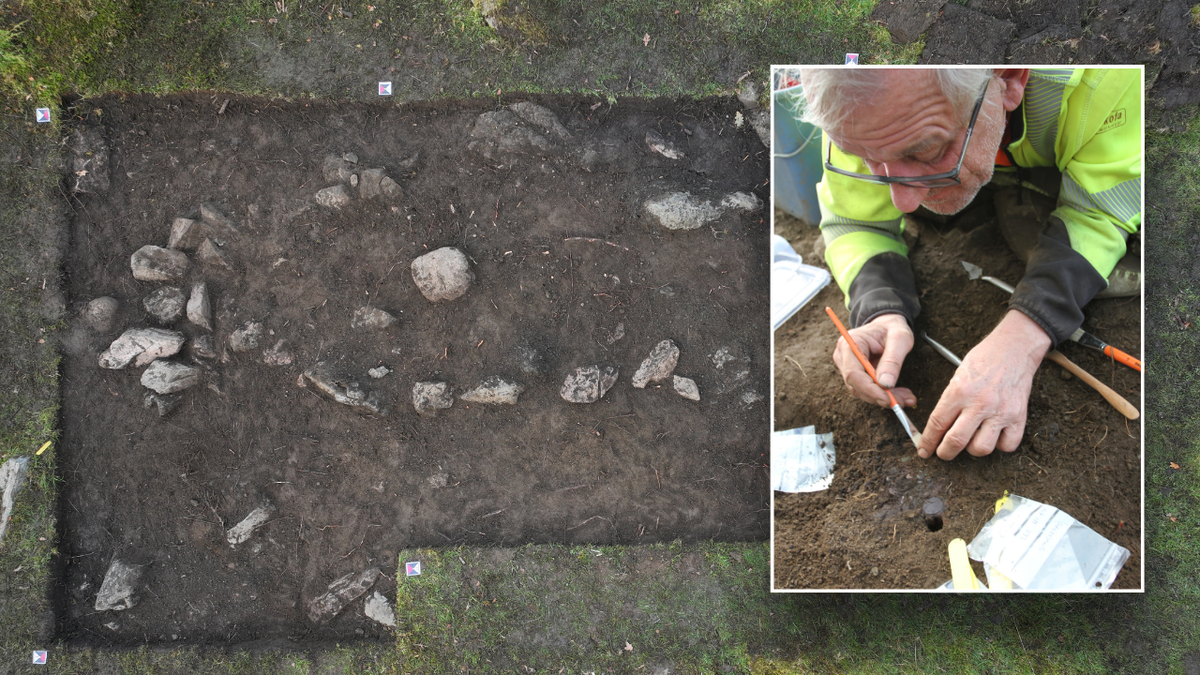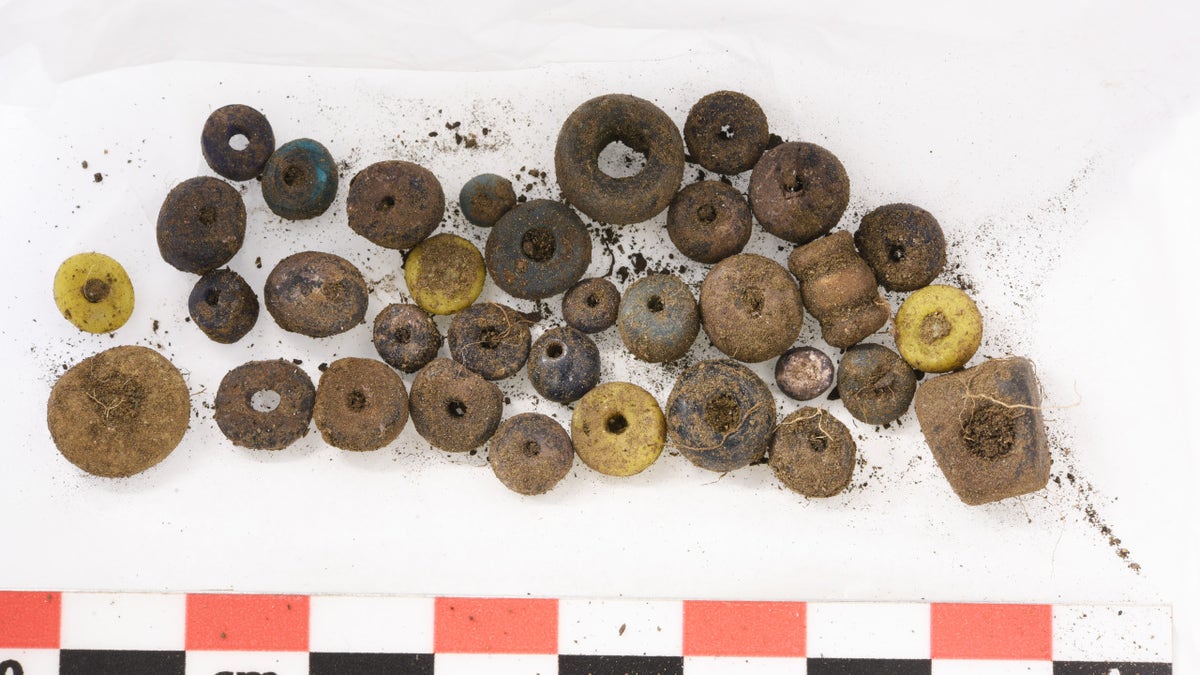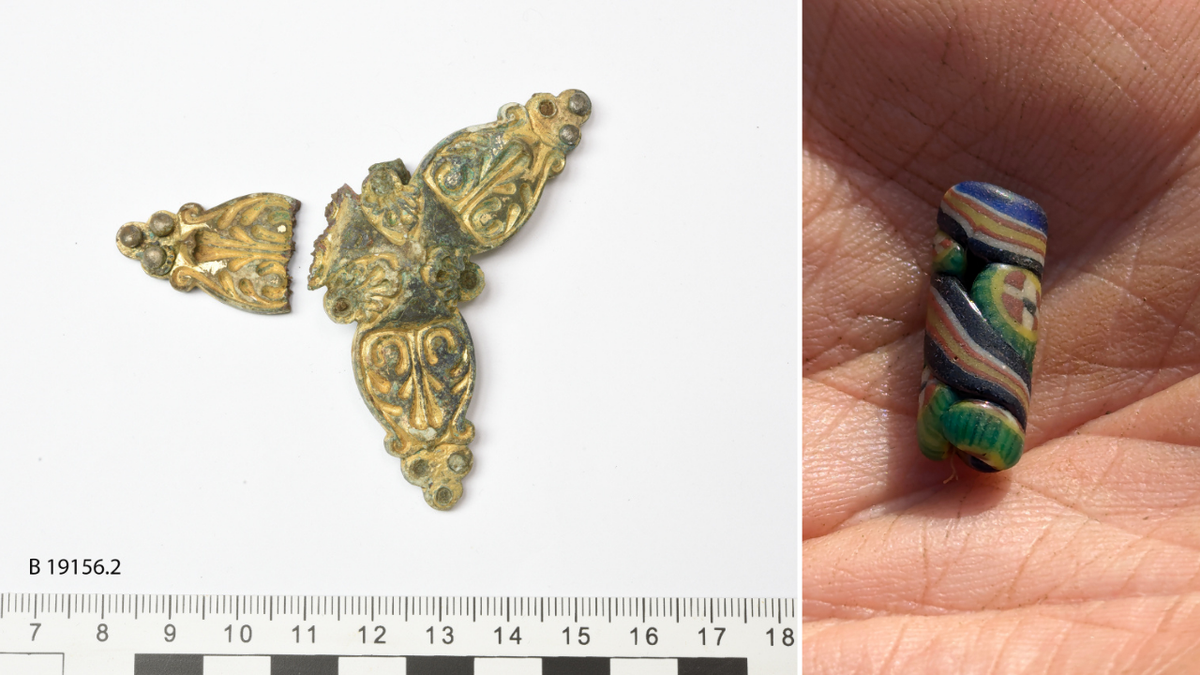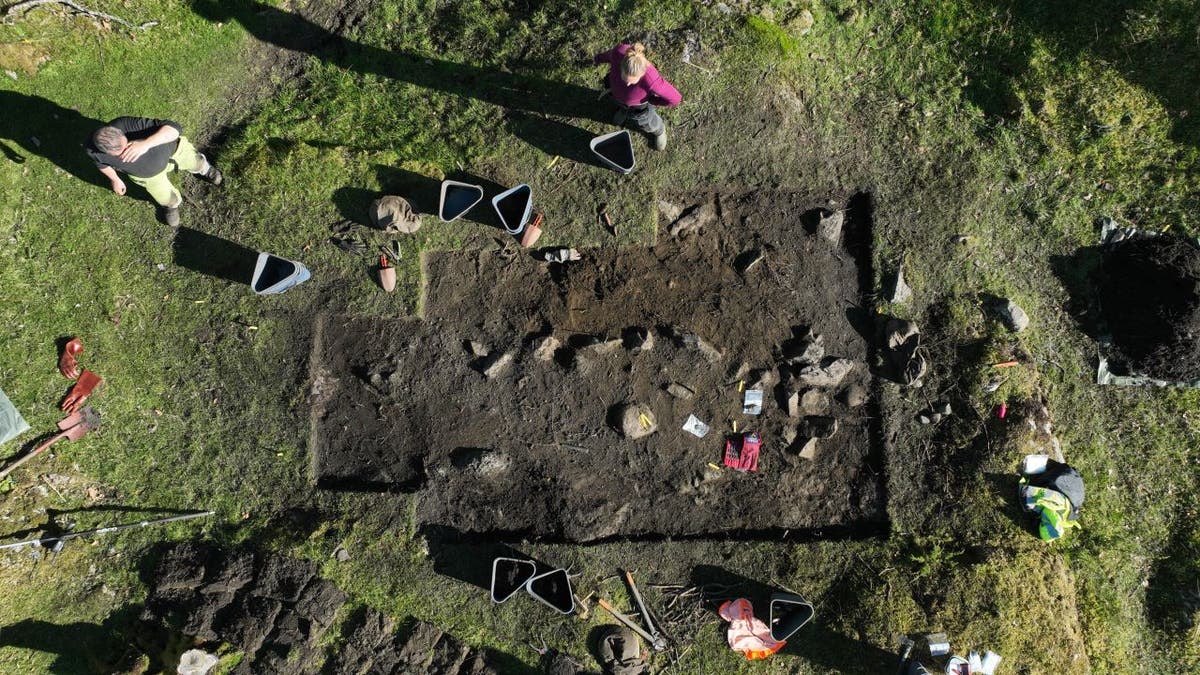A recent archaeological dig in southwestern Norway has uncovered a pair of Viking graves brimming with artifacts, offering a glimpse into the lives of wealthy women during the Viking Age. The discovery, made at Skumsnes farm in Fitjar, was thanks to members of the Bjørgvin Detector Club, who located the graves in the autumn of 2023 using metal detectors. Archaeologists from the University Museum of Bergen, led by Søren Diinhoff, subsequently excavated the site.
Dating back to 800-850 A.D., both graves contained a wealth of items, including coins, jewelry, and other precious objects. The first grave yielded fragments of gilded oval brooches, pieces of a metal cauldron or dish likely crafted in southern England or Ireland, and a repurposed book clasp. Diinhoff believes the clasp, potentially originating from a Bible, was likely taken from a Christian monastery in the British Isles and transformed into a brooch or buckle pin.

The fragmented nature of the artifacts in the first grave suggests it was plundered shortly after the burial, possibly even during the Viking Age itself, either for valuables or to dishonor the deceased. The second grave, however, remained largely undisturbed and proved even richer in historical significance.

This second grave contained tools for textile production, indicating the woman buried there held a prominent role in managing the farm's textile operations, a prestigious and lucrative activity. A bronze key, symbolizing her leadership within the household, and what appears to be a frying pan further support this theory. A pearl necklace with 46 glass beads from various European and Scandinavian origins, interspersed with 11 silver coins, was also discovered. The coins offer further insight into trade and interaction during the Viking Age, with one minted in Jutland and the others Frankish, dating back to the reign of Louis the Pious.

Diinhoff highlighted the common practice of trade between Anglo-Saxons and Vikings, though acknowledging not all exchanges were voluntary, suggesting the coins were likely traded, while the book clasp was probably a plundered item. In addition to the two fully excavated graves, a third was partially examined, revealing a gilded brooch and 25 glass beads. Researchers believe the individuals interred in these graves may have belonged to the same family.

With at least 20 more graves identified at the site, archaeologists are working to secure funding for further excavations, fearing the shallow burials are vulnerable to damage and potential loss. Diinhoff expressed gratitude to the metal detectorists for their crucial role in the discovery, which has provided a valuable opportunity to explore this Viking-era burial ground.
Comments(0)
Top Comments